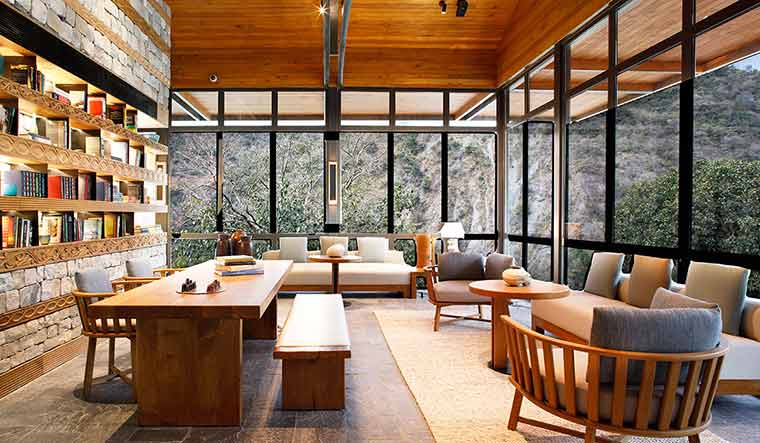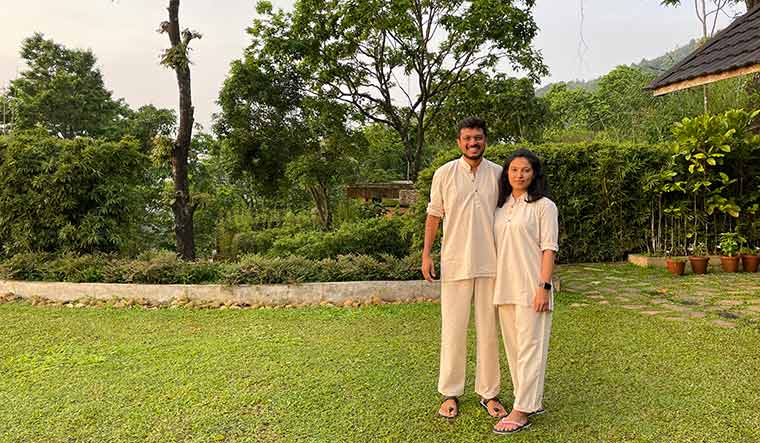The Romans sure knew how to relax. Around CE 43, they built baths around Britain’s only natural hot springs in the valley of River Avon, turning it into an ancient hub of rest and relaxation. They called it Aquae Sulis, after Goddess Sulis Minerva; the English, well, kept it literal, calling it simply Bath (in present-day Somerset). While initially known for its healing properties, Bath became a hotspot for pleasure and relaxation, especially among the English royals and high society in the 1700s and 1800s. (Bath, therefore, features in two of Jane Austen’s novels—Northanger Abbey and Persuasion. A chronicler of her times, Austen called Bath home for a while, so did Mary Shelley). Apart from royal and literary visits, Bath, over the years, attracted many a tourist. In 1987, Bath became a World Heritage Site and, in 2021, was accredited as one of the Great Spa Towns of Europe.
Long before the Romans though, Indians knew a thing or two about the healing properties of nature, thanks to ayurveda. Today, ayurveda and naturopathy form the basis of the wellness concept in India. And, like with Bath, wellness has evolved over time in India. From just spas and resorts, we now have holistic wellness centres. But the biggest shift in the industry, both globally and in India, happened during and post the pandemic.
As per the Global Wellness Institute (GWI), the wellness tourism market was $720 billion in 2019; it dropped to $436 billion in 2020. India ranked 12th in the top 20 destination markets for wellness tourism in 2020. In 2017, its wellness tourism expenditure, according to the GWI report, was $11.4 billion, rising to $13.3 billion in 2019. In 2020 though, it fell to $7.2 billion. But GWI predicts a rapid growth in the coming years—a $1.1 trillion market in 2025. And, if one goes by the trends in the Indian wellness industry, the growth prediction can very well apply here as well.
The 2020 dip was expected as there were pandemic-induced travel restrictions. Earlier, a bulk of the wellness market in India was dominated by international travellers, now it is domestic. “Post pandemic, what we started seeing was how the domestic market kind of suddenly woke up to all these offerings that we had, including ayurveda, naturopathy and wellness holidays,” says Sidarth Dominic, CEO, CGH Earth Experience Wellness.
Earlier, 90 per cent of its clientele was international; now around 80 per cent is domestic. And, it is the domestic traveller who is driving the business at CGH’s four properties dedicated to wellness—Prakriti Shakti (naturopathy hospital in Idukki), Kalari Rasayana and Kalari Kovilakom (ayurveda hospitals in Kollam and Palakkad, respectively) in Kerala and SwaSwara (wellness resort) in Gokarna, Karnataka.
It is the same with Ananda in the Himalayas—A Destination Spa in Garhwal, Uttarakhand. About 80 per cent of its clientele was international; it is 100 per cent Indian now, says its COO Mahesh Natarajan.
And, the spike is not just in the number of travellers coming in but also in the duration of their stay. “The average duration for which people were travelling to us has gone up from 6.3 nights to 11 nights post Covid,” says Nikhil Kapur, founder, Atmantan, a wellness centre in Mulshi, Pune.
And, one reason for the increase in stays could be the shift in perspective towards wellness—from a rejuvenating, relaxing option to one that offers solutions and cure. While a lot of people have been heading to wellness centres for post Covid or long Covid recovery, many others have also signed up for programmes to treat a host of other issues like chronic stress, weight gain, respiratory issues, and autoimmune and lifestyle diseases.
“We are seeing a huge shift [in that respect],” says Dominic. “Earlier people usually came for preventive treatments. But today, people come with specific issues.” Agrees Natarajan, who says that Ananda has seen a jump in Indian clients opting for comprehensive wellness programmes. “If I look at 2021 versus 2019, it is almost like a 40 per cent increase in domestic Indian customers who are coming in for comprehensive wellness programmes, which is actually a very welcome sign.”
Industry insiders, however, agree that many of the physical ailments are mere manifestations of the stress, anxiety and uncertainty of the two years of the pandemic. “I know people who had chronic pain issues, which, when we have gone down to the root, we have understood that it is actually not a physical issue, it is stemming from something which is deeply emotional or mental,” says Natarajan. The way Ananda is addressing that challenge is by roping in emotional healers apart from ayurvedic doctors and also bringing in yogis and Vedanta teachers for spiritual guidance. At CGH, doctors, apart from treating the patients through traditional means, have turned counsellors, too, says Dominic.
This overall demand for wellness has led to more and more hoteliers trying to introduce some flavour of wellness in their experiences. “There is an understanding that when a consumer travels, they will look for places that are an extension of the healthy lifestyle and that is why you will see a lot of hotels and resorts that didn’t have any wellness kind of offering now moving towards the soft wellness space,” says Kapur, adding that Atmantan will be opening more centres in India and overseas as well.
CGH, too, is in discussions for a couple of joint ventures to take it to Uttarakhand. “There is even an invitation from someone who has acquired a palace outside London, someone has invited us to Moscow,” says Dominic. “A lot of discussions are happening but we are being cautious because of Covid-19.”
For Taj, which launched its natural luxury spa brand JIVA in 2004, the post-pandemic shift prompted them to curate a unique programme called Innergise in July 2021 in more than 10 hotels cocooned in nature, like in Rishikesh, Bekal and Coorg. So, there is the usual yoga, waking up early, eating right routine, but also immersive experiences like Ganga aarti in Rishikesh.
“Our intent was to change your lifestyle while you are vacationing,” says Sushmita Sarangi, commercial director, JIVA. “And also giving you the opportunity to reconnect with nature, as well as reconnect with yourself and your family or your friends. So the whole theme was one of reconnection.” And, the beauty of this three to four-day programme is that you can personalise it. Even Taj hotels in cities like Mumbai offer a shorter duration of the programme, giving a peek into what a healthy lifestyle could be.
Since the programme is not very regimented, a lot of youngsters are taking to the programme, says Sarangi. And, this change is visible across the sector. “There is a whole wave of going after conscious living and sustainable living, especially with young adults,” says Natarajan. “We have seen a huge surge in customers who are in their 30s, and that’s a big shift for Ananda.”
It is a shift that CGH has seen in its naturopathy centre, too. Madhu Medappa, 31, and his wife, Shipin Dechamma, 26, visited Prakriti Shakti in May. While they were always keen on leading a healthy lifestyle, the pandemic gave them the push to actually experience it. The reason they picked Prakriti Shakti was because the treatments did not feel like treatments; it was more of a lifestyle kind of a thing. “So, we thought we can go learn something from there and come back and make little changes in our lives,” says Medappa, senior project manager, Kavin Corporation. “Also, we were looking for a getaway place after Covid. So we thought, you know, we can have the best of both worlds.”
But the best comes at a price. Is price sensitivity an issue? Kapur says it is an issue, even with the overseas traveller. But the pandemic has changed that, says Natarajan; it is not about price anymore. “What the Indian consumer looks for is value,” says Sarangi.
While the industry is getting back on its foot thanks to customers coming in, its biggest challenge is getting skilled staff. While Sarangi says it is a challenge not just in India, but globally, too, Dominic says there has been a lot of poaching, from the Middle East and the shipping industry. Taj runs an academy out of its hotel in Yeshwanthpur, and Ananda has the Ananda Spa Institute. But, as Natarajan says, this cannot be a one player activity; it has to be institutionalised in a big way.
Despite challenges, the industry powers through. As Dominic says, wellness travel is going to be an exploding market in India, where people will start making a mandatory annual travel for wellness, separate from their holiday travel.





